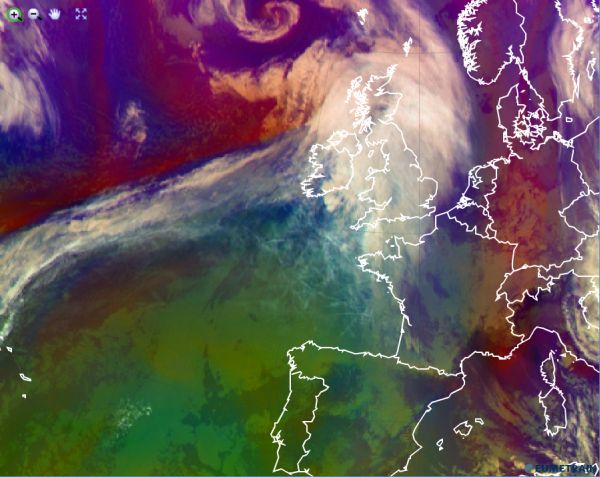The Airmass RGB
Information received from the three channels that contribute to the RGB combination
| WV6.2 - WV 7.3 (difference of the two WV channels)
|
Information about moisture content in middle/upper layers of the troposphere
|
| IR 9.7 - IR 10.8 (ozone channel - IR window channel)
|
Information about ozone concentration, which differentiates cold (polar) and warm (mid-level, subtropical) air masses
Cold air mass: high ozone concentration and low tropopause; warm air mass: low ozone concentration and high tropopause
|
| WV 6.2 (Water Vapor channel 05)
|
Information about humidity in upper layers of the troposphere
|
Resulting colors for typical features
| White
|
Thick clouds
|
| Green
|
Warm air masses
|
| Blue
|
Cold air masses
|
| Dark red/brown
|
Dry upper air, PV anomalies
|
Typical application areas
- Differentiation between cold and warm air masses (blue - green)
- Recognition of very dry air that has descended from the stratosphere (dark brown)
- Dynamical features: tropopause folding; high PV values
Due to the incorporation of water vapor and ozone channels, the Airmass RGB's usage at high satellite viewing angels is limited.

